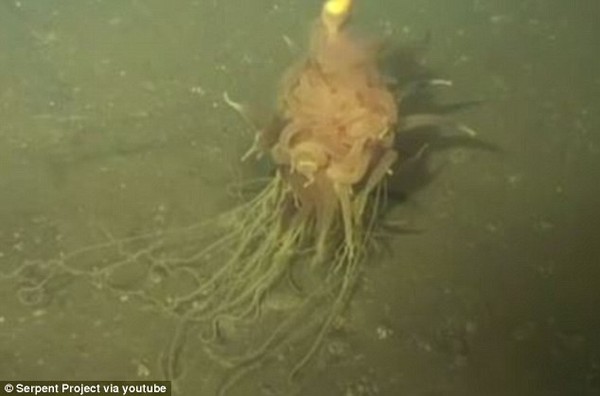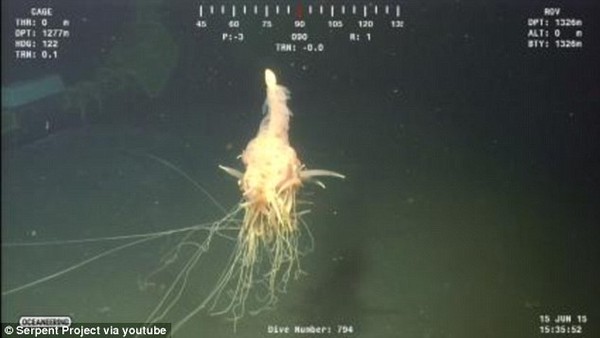Deep sea spaghetti flying monster discovered in Angola
Experts identify this strange creature belonging to the group of Siphonophores.
New creatures of the Siphonophores group have just been discovered in the ocean
Recently, a strange creature like jellyfish but there are countless "fringes" that look like spaghetti noodles were discovered off the coast of Angola.
The members of BP have discovered this creature while operating near the oil well at a depth of more than 1,200 meters above sea level. With a strange appearance and long ramen-like fringes, this strange creature has been nicknamed the ' Flying Spaghetti Monster '.

However, in closer examination, researchers at the National Oceanographic Center in Southampton, England have identified, this creature has the scientific name Bathyphysa conifera . They are one of the subspecies of the group of organisms Siphonophores.

It is known that Siphonophores looks like jellyfish but belongs to the Cnidaria strain - a group of "hybrid" animals between coral and jellyfish and is one of the longest species in the world - about 50m.

Siphonophores have a strange beauty, which looks like the flowers of the ocean. This creature has a long, thin body, has transparent species, lives in deep sea waters and is most populated in Portuguese waters.
A special feature in Siphonophores makes the headache of science, they are a creature or a lot of organisms. Because Siphonophores is not a solitary creature, it is a collective population of many small individuals called zooids.

One of the creatures of the Siphonophores group.
Each Zooids have their own tasks (such as self-defense, reproduction, eating .) that contribute to the whole population but must rely on each other to survive, together perform the survival function.
A special feature is that although all zooids can be separated from the population, the whole siphonophores still grow from an independent egg . Experts still continue to study this strange species.
- Scientists at MIT successfully crafted a machine to break spaghetti into two
- The video shows an unprecedented deep freak monster
- Discover the hiding place of Loch Ness monster monster?
- Russia restored contact with Angola's Angosat-1 satellite
- Why can't you find minced beef spaghetti in Italy?
- The mysterious 'monster worm' appeared on the glacier
- The monsters in the deep sea 4.800m in Australia
- Angola: cholera kills 1,200 people
- Discover 10,000-year-old precious groundwater
- The biggest giant sea monster in the Scottish sea: Reusing 7 whales at the same time
- Deep sea monster with strange sharp teeth throughout
- 10 most famous aquatic monsters of all time
 Surprised: Fish that live in the dark ocean still see colors
Surprised: Fish that live in the dark ocean still see colors Japan suddenly caught the creature that caused the earthquake in the legend
Japan suddenly caught the creature that caused the earthquake in the legend A series of gray whale carcasses washed ashore on California's coast
A series of gray whale carcasses washed ashore on California's coast Compare the size of shark species in the world
Compare the size of shark species in the world